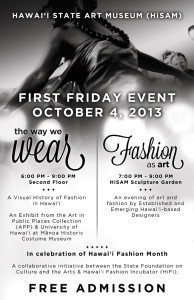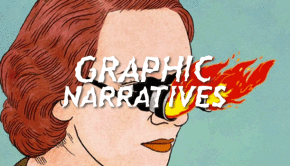Broken Trust Shakes Very Foundation of Art and Culture
Groans, tears, outbursts, people walking out—Local and Hawaiian artists and supporters provided a tense soundtrack at last week’s Hawaii State Foundation on Culture and the Arts (HSFCA) commissioners’ meeting.
The drama was for good reason. The HSFCA, an organization set up to “promote, perpetuate, preserve, and encourage culture and the arts, history, and the humanities as central to the quality of life of the people of Hawaii,”—according to its mission statement—appropriated and edited a 1968 photograph made by the late Francis Haar of kumu hula Iolani Luahine into promotional material and merchandise designed for the HSFCA’s October First Friday event and art exhibition, Fashion as Art/The Way We Wear—none of this with permission by the Haar estate.
“The absolute worst thing you can do is cut off our heads.”
Maile Meyer, Owner of Na Mea Hawaii/Native Books
What makes the situation even messier is that Luahine, a revered Hawaiian cultural leader—the New York Times called her the “last great exponent of the sacred hula ceremony” in its obituary about her—is rotated to emphasize her dress with the top part of her head cropped out of the photograph.
“The absolute worst thing you can do is cut off our heads,” says Maile Meyer, owner of Na Mea Hawaii/Native Books. “[Removing] the ability to use Ha, the life force.”
 The edited image was printed on coasters, coffee mugs, tote bags, and other items, merchandise Barbara Saromines-Ganne, chairperson of the HSFCA board of commissioners, assured was destroyed to those at the meeting. (That has since been disputed as those items were found in an office at the HSFCA. “I gave the directive to pull it off the shelves and destroy it,” Saromines-Ganne says. “I thought it was destroyed. I then found out it’s in a room.” She now says the merchandise is sequestered, and “as soon as I get off the phone, I’m going to be looking into that.”)
The edited image was printed on coasters, coffee mugs, tote bags, and other items, merchandise Barbara Saromines-Ganne, chairperson of the HSFCA board of commissioners, assured was destroyed to those at the meeting. (That has since been disputed as those items were found in an office at the HSFCA. “I gave the directive to pull it off the shelves and destroy it,” Saromines-Ganne says. “I thought it was destroyed. I then found out it’s in a room.” She now says the merchandise is sequestered, and “as soon as I get off the phone, I’m going to be looking into that.”)
After members representing the arts and Hawaiian communities attended the taut commissioner board members’ meeting, Eva Laird Smith resigned as the HSFCA’s executive director. She wouldn’t respond to questions, although she said she is currently on vacation in the Philippines until Dec. 3.
How Did it Come to This
To see how it came to this, we have to go way back to 1965, when Alfred Preis, best known as the architect of the USS Arizona Memorial at Pearl Harbor, and Masaru Yokuchi, helped establish the HSFCA by persuading legislature to create the first Hawaii state arts agency, eligible to receive grants from the newly established National Endowment for the Arts.
This included a percent-for-art law, meaning one percent of construction costs of new buildings is applied to purchasing or commissioning works of art by Hawaii artists. Hawaii is the first state with a law like this, and many other states have since followed its example. The Arts in Public Places (APP) program was established a few years later, in 1967, under the HSCFA, and is furthermore funded by one percent of any renovation costs to state capital improvement projects.
Preis, being from Austria, and Haar, a Hungarian, were fast friends when Haar immigrated to Hawaii in 1960 and began work on a documentary about Luahine. Haar made many photographs while directing the documentary, and Preis commissioned Haar to produce 75 prints of Luahine specifically for the HSFCA. But, according to Tom Haar, son of Francis and caretaker of the Haar estate, because of his father’s friendship with Preis, no special type of agreement was signed.
“Just very recently, on Sept. 14, I signed an agreement,” Haar told me over the phone. “It’s so ironic, because in that agreement, it states specifically [that there can be] no commercial usage. [The HSFCA] can use it for internal printed matter, but not for commercial use.”
“I’m not trying to defend the agency with this incident, but I will say that, in this day and age, protecting images is more and more difficult. But this should not have happened with our agency.”
Barbara Saromines-Ganne, Chairperson of the HSFCA board of commissioners
The non-exclusive license that Haar signed states that the foundation can only reproduce the photograph for documentary or educational purposes, but “in no event” may it “reproduce or authorize others to reproduce the Work in, or in connection with, commercial merchandizing products or services, [...] whether or not for sale,” without Haar’s written consent.
It also promises that the HSFCA would “adhere to its customary high standards in respecting the quality and integrity of the Work in any reproductions it undertakes.”
“For this kind of a breach to happen is deplorable. It’s terrible,” says Saromines-Ganne. “I’m not trying to defend the agency with this incident, but I will say that, in this day and age, protecting images is more and more difficult. But this should not have happened with our agency.”
Franco Salmoiraghi, a photographer also represented in the APP collection and who co-wrote an open letter to the arts community about this issue with Haar and Duane Preble, is very familiar with the risks photographers face in digitizing their work.
“Because files of images are so easily disseminated, and all the work in the HSFCA collection is digitized now, who knows after this event who has copies of this?” he asks. “It boils down to having to trust people with your image. We photographers go through this all the time. We’re requested to send hi-res files even to use in a newspaper. It’s not like slides in the old days, when they had to send it back. The original then had a certain value. Anything else that was a duplicate was degenerated. Now, files do not degenerate. So it boils down to trust, which, as we’re seeing around the world, is in short supply. Especially in the political realm, and we’re dealing with politics in the HSFCA. It’s a very complicated issue.”
Salmoiraghi adds that this is only one layer of the problem. “The cultural insensitivity to the use of images of people,” he says, “that’s what’s at fault. And it happened to be a Hawaiian kupuna. They couldn’t have picked a worse scenario for themselves.”
Still, Someone Created the Thing
While Meyer calls Laird Smith’s resignation “wonderful news [and] a right next step [to getting] back in balance”, and Haar says that he’s hoping for a complete board-member overhaul, it shouldn’t be overlooked that there was an artist behind this, a graphic designer named Brandon Dela Cruz. The commissioners at the meeting repeatedly referred to him not by name, but as “the young man who designed the flier” while insinuating that the work was done by him to the oblivion of Laird Smith and the commissioners. Dela Cruz wouldn’t return our calls.
 He is currently under a low-bid contract to redesign the foundation’s website. According to Saromines-Ganne, Dela Cruz already had the disc of images from that project when designing the flier and selected the Haar photograph because he thought it was under the public domain.
He is currently under a low-bid contract to redesign the foundation’s website. According to Saromines-Ganne, Dela Cruz already had the disc of images from that project when designing the flier and selected the Haar photograph because he thought it was under the public domain.
“He didn’t know who Iolani Luahine was, and everybody in the Hawaiian community knows what an icon she is. He just didn’t know who she was. He cropped it, rotated it, made it pop out as a graphic design. [...] It was used inappropriately.”
Meyer says issues such as this come up when the community needs it. “This is causing us to pay attention to what people don’t know about Hawaiians. Not necessarily that they don’t care, but that they don’t know. [...] It’s time to learn from it, grow from it, make sure everybody’s included. I told [Dela Cruz] it was actually a good choice, that he picked the right image. Iolani is teaching us now. Couldn’t have been worse or better. If it was any other person, people wouldn’t have been out [at the meeting]. It had to be so bad to be good.”
“It comes down to the ethics of the person who is using the image, for me,” says Salmoiraghi. “This is a societal issue. Everything’s up for grabs in our society, and can be used for any kind of profit. We live in an extremely material world. You can’t separate Hawaii from the world anymore because of the media. It’s a systemic failure in our society. And it shows up in local ways, like this. We’re desensitized to a lot of issues. And photographs are the first and easiest things to use.”
What’s Pau is Pau
“I see why all of the artists are very upset. I see why all of the Hawaiian groups that came were very upset, and they were upset for very legitimate reasons,” said Julia Steele in a phone interview. One of the more recent appointees to the HSFCA commission, Steele’s career as the founding editor of Honolulu Weekly and current editor of the Hawaiian Airlines arts and culture magazine, Hana Hou, for the past decade places her in a unique position to understand the complicated issues here.
“This is causing us to pay attention to what people don’t know about Hawaiians. Not necessarily that they don’t care, but that they don’t know.”
Maile Meyer
“Positive change can and should be made,” she says. “As much as I can do to help with that, I would like to. That’s why it’s really important to have meetings with artists and with the Hawaiian community to brainstorm about what the change would look like, getting down into the nitty gritty of what it would actually consist of, how it can be created and funded, how the funding would be generated. There just has to be agreement and accordance among all the commissioners, staff, and community. If you look at it in an optimistic way, it’s exciting—it already has forced a lot, and I think it will continue to. It can be a springboard to look at a lot of different issues.”
What the commission will do next, according to Saromines-Ganne, is find an interim director. Presently, Laird Smith will stay in the position until the end of December, but Saromines-Ganne says that if Laird Smith has more vacation time, she may take it. “We really have not been in touch with her.”
“Hawaiians have a saying, ‘What’s pau is pau,’” Meyer says. “What’s done is done. The thing to do at this point is to look forward.”
 Photograph of Iolani Luahine by Francis Haar. All photos courtesy of Tom Haar.
Photograph of Iolani Luahine by Francis Haar. All photos courtesy of Tom Haar.









